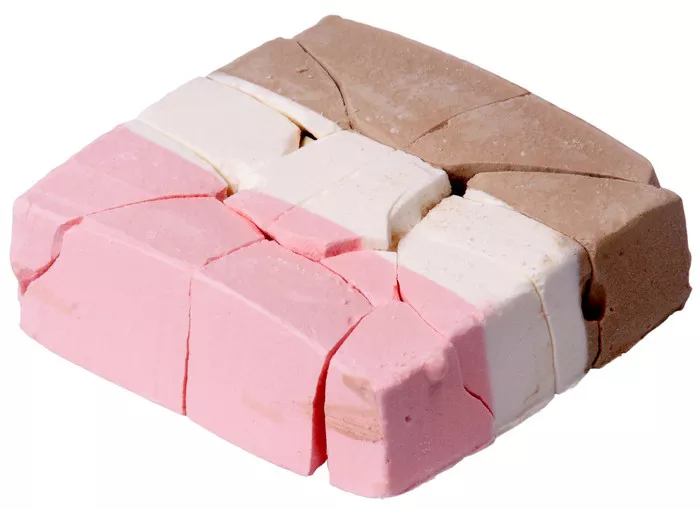Baskin-Robbins, an iconic name in the ice cream industry, has been delighting customers with its wide array of flavors for decades. However, a question that often arises is whether this beloved ice cream brand is owned by Dunkin’, a powerhouse in the coffee and donut sector. This article delves into the history, ownership, and the strategic alignment of Baskin-Robbins and Dunkin’, providing a comprehensive understanding of their relationship.
The Origins of Baskin-Robbins
Baskin-Robbins was founded in 1945 by two ice cream enthusiasts, Burt Baskin and Irv Robbins, in Glendale, California. Their vision was simple yet innovative: to offer a variety of 31 different ice cream flavors, one for each day of the month. This idea quickly caught on, and Baskin-Robbins became synonymous with quality and variety in the ice cream world. The brand’s iconic pink and blue logo and the “31” flavor concept have remained central to its identity.
Dunkin’s Journey
Dunkin’ (formerly Dunkin’ Donuts) was founded in 1950 by William Rosenberg in Quincy, Massachusetts. Known initially for its donuts and coffee, Dunkin’ quickly expanded its menu to include a variety of beverages and baked goods. Over the decades, Dunkin’ became a staple in the American coffee culture, with its slogan “America Runs on Dunkin'” becoming widely recognized.
The Acquisition and Ownership
The pivotal moment in the relationship between Baskin-Robbins and Dunkin’ occurred in 2005. That year, Baskin-Robbins was acquired by Dunkin’ Brands, the parent company of Dunkin’. This acquisition brought two iconic brands under one corporate umbrella, allowing for strategic synergies and expanded market reach.
Corporate Synergy and Brand Integration
The integration of Baskin-Robbins and Dunkin’ under Dunkin’ Brands has led to several strategic benefits. One notable advantage is the combined marketing power. By leveraging the strengths of both brands, Dunkin’ Brands has been able to execute joint promotions and cross-brand marketing campaigns, enhancing the visibility of both Baskin-Robbins’ ice cream and Dunkin’s coffee and baked goods.
Co-Branding and Store Formats
One of the most visible results of the Baskin-Robbins and Dunkin’ partnership is the co-branded store format. Many locations now offer both Baskin-Robbins ice cream and Dunkin’ products under one roof. This format provides customers with the convenience of enjoying ice cream and coffee in a single visit, thereby increasing foot traffic and sales for both brands.
Operational Efficiencies and Shared Resources
The merger of Baskin-Robbins and Dunkin’ has also led to operational efficiencies. Shared resources in terms of supply chain management, logistics, and real estate have enabled both brands to reduce costs and streamline operations. This synergy has been particularly beneficial in managing the seasonal demands of ice cream and coffee products.
Financial Performance and Market Position
Since the acquisition, Dunkin’ Brands has seen substantial growth in its financial performance. The integration of Baskin-Robbins’ ice cream offerings has contributed to a diversified revenue stream. Moreover, the combined market position of the two brands has strengthened their competitive stance in the food and beverage industry.
Innovation and Menu Expansion
Under Dunkin’ Brands’ ownership, Baskin-Robbins has continued to innovate its ice cream offerings. The brand has introduced new flavors, improved its product formulations, and expanded its menu to include ice cream cakes, sundaes, and other frozen treats. This innovation has kept Baskin-Robbins relevant in a competitive market, appealing to both new and loyal customers.
See Also: Laura Secord Ice Cream Franchise Cost
Global Expansion and Market Penetration
Dunkin’ Brands has also facilitated the global expansion of Baskin-Robbins. The combined resources and international experience of Dunkin’ have allowed Baskin-Robbins to enter new markets and strengthen its presence in existing ones. Today, Baskin-Robbins operates in over 50 countries, bringing its diverse ice cream flavors to a global audience.
Customer Experience and Loyalty Programs
Another area where the synergy between Baskin-Robbins and Dunkin’ is evident is in their customer experience and loyalty programs. Both brands have leveraged digital technologies to enhance customer engagement. The integration of loyalty programs allows customers to earn rewards on purchases from both Baskin-Robbins and Dunkin’, increasing customer retention and satisfaction.
Sustainability and Corporate Responsibility
Dunkin’ Brands has also emphasized sustainability and corporate responsibility across its portfolio, including Baskin-Robbins. Initiatives such as reducing single-use plastics, sourcing sustainable ingredients, and supporting local communities are part of the broader corporate strategy. These efforts resonate with environmentally conscious consumers and contribute to the brands’ positive image.
Challenges and Strategic Adjustments
Despite the numerous benefits, the integration of Baskin-Robbins and Dunkin’ has not been without challenges. Adapting to diverse consumer preferences, managing brand identities, and navigating competitive pressures require continuous strategic adjustments. However, the robust corporate structure of Dunkin’ Brands has enabled both Baskin-Robbins and Dunkin’ to remain agile and responsive to market changes.
Future Prospects and Strategic Vision
Looking ahead, the future prospects for Baskin-Robbins and Dunkin’ appear promising. The continued focus on innovation, market expansion, and customer experience is expected to drive growth. Additionally, the potential for further synergy and collaboration between the brands will likely yield new opportunities in product development and market penetration.
Conclusion
In conclusion, Baskin-Robbins is indeed owned by Dunkin’, bringing together two iconic brands under one corporate entity. This relationship has facilitated numerous strategic advantages, from operational efficiencies to enhanced market presence. As Baskin-Robbins continues to delight customers with its diverse ice cream flavors, the support and resources provided by Dunkin’ Brands play a crucial role in sustaining its success and growth in the competitive ice cream industry.


